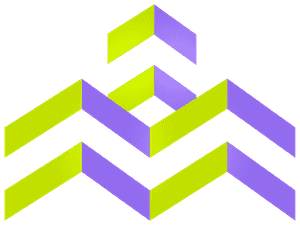Insights from AI Literacy Practices Implemented by 15 Organizations
by Streamlex 17 February 2025
With AI Act Article 4 on AI Literacy entering into application on 2 February 2025, organizations across Europe are increasing efforts to enhance AI literacy within their workforce. To support this, the EU AI Office has published a Living Repository of AI literacy practices, showcasing real-world approaches adopted by businesses and institutions. An analysis of this repository highlights key learning formats, target groups, and challenges organizations face when implementing AI literacy programs. These insights can help organizations develop AI training strategies that align with their workforce needs and business goals.
AIA Article 4 Requirements
Under the AI Act, providers and deployers of AI systems must ensure their personnel have sufficient AI literacy, meaning the skills and knowledge needed for informed AI deployment and awareness of its risks and potential harm. This requirement applies to all AI systems, regardless of risk level.
‘AI literacy’ means skills, knowledge and understanding that allow providers, deployers and affected persons, taking into account their respective rights and obligations in the context of this Regulation, to make an informed deployment of AI systems, as well as to gain awareness about the opportunities and risks of AI and possible harm it can cause (AIA Article 3(56))
While breaches of AI literacy requirements (AIA Article 4) do not have specific fines, they may be considered when enforcing other violations.
How Organizations Deliver AI Literacy
Organizations are employing a variety of training formats to ensure AI literacy is accessible, relevant, and impactful. The most common methods include:
- E-Learning Platforms Digital training platforms offer flexible, scalable learning opportunities, providing structured courses that accommodate different levels of expertise. Some organizations use global e-learning platforms to deliver AI-related training, ensuring accessibility across different languages and professional contexts.
- Internal AI Academies Some organizations establish dedicated AI academies to provide targeted AI training for specific roles. These academies are often developed in collaboration with universities and research institutions to ensure training aligns with industry and regulatory standards.
- Tailored Training Programs AI literacy programs are adapted based on employees’ technical background, job function, and learning goals. These programs range from foundational AI knowledge for general employees to in-depth training for technical teams working on AI development and integration.
- Collaborative Learning Initiatives Cross-industry partnerships with universities, research institutions, and other organizations are used to enhance AI education. Some organizations participate in collaborative initiatives that share AI expertise across sectors, while others engage in training programs designed for startups, SMEs, students, and educators.
- Hands-On Training & Mentorship Many organizations incorporate hands-on training, allowing employees to work directly with AI tools and real-world use cases. Some also introduce mentorship programs, where experienced AI users guide colleagues in applying AI effectively in their roles.
- Video & Podcast Learning To cater to different learning styles, some organizations are developing multimedia learning resources such as video and podcast series. These materials are often accompanied by subtitles and written handouts to ensure accessibility for a diverse workforce.

Who Benefits from AI Literacy Programs?
AI literacy is increasingly recognized as essential for a broad range of roles within organizations:
- All Employees: Many organizations provide foundational training on AI concepts, benefits, risks, and ethical considerations.
- Technical Teams: AI developers, engineers, and data scientists receive advanced training focused on AI model development, deployment, and responsible AI use.
- Management & Leadership: Executives and decision-makers participate in strategic programs focused on AI opportunities, risks, and governance.
- Legal, Compliance & Risk Teams: Specialized training is offered on AI regulations, data privacy, security, and compliance.
- HR, Finance & Commercial Teams: Training includes AI applications in talent management, financial analysis, and operational efficiency.
- Customer Service Teams: Some organizations provide training on how AI can be used to automate tasks and improve customer interactions.
- Creative & Design Teams: AI literacy programs for design and content teams focus on generative AI applications in storytelling, branding, and user experience.
- External Stakeholders: Some organizations extend AI literacy efforts to clients, partners, and suppliers to promote responsible AI adoption across their ecosystem.
Challenges in Rolling Out AI Literacy Programs
While organizations recognize the importance of AI literacy, they face several common challenges:
- Addressing knowledge gaps and varying levels of prior experience.
- Keeping content relevant amid rapid technological change
- Engaging employees across departments and overcoming resistance.
- Balancing data-driven innovation with ethical considerations like privacy and bias.
- Maintaining inclusive and accessible learning opportunities.
Further Resources
For organizations looking to develop AI literacy strategies, the EU AI Office’s Living Repository provides a good starting point of real-world AI literacy practices. The AI Office plans to update the list regularly.


